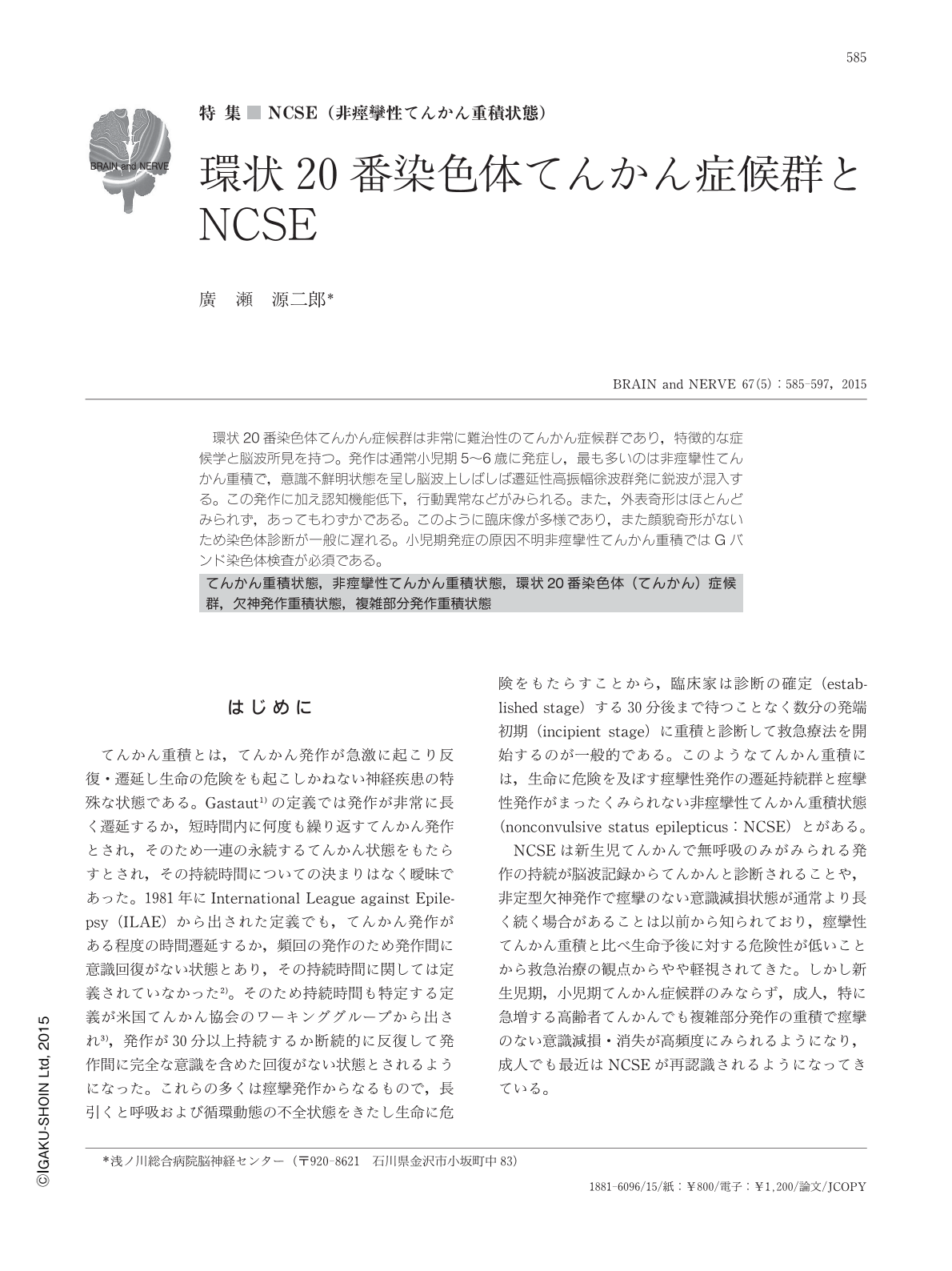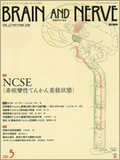Japanese
English
- 有料閲覧
- Abstract 文献概要
- 1ページ目 Look Inside
- 参考文献 Reference
環状20番染色体てんかん症候群は非常に難治性のてんかん症候群であり,特徴的な症候学と脳波所見を持つ。発作は通常小児期5〜6歳に発症し,最も多いのは非痙攣性てんかん重積で,意識不鮮明状態を呈し脳波上しばしば遷延性高振幅徐波群発に鋭波が混入する。この発作に加え認知機能低下,行動異常などがみられる。また,外表奇形はほとんどみられず,あってもわずかである。このように臨床像が多様であり,また顔貌奇形がないため染色体診断が一般に遅れる。小児期発症の原因不明非痙攣性てんかん重積ではGバンド染色体検査が必須である。
Abstract
Ring (20) chromosome epilepsy syndrome is characterized by highly refractory epilepsy that is often associated with non-pathognomonic, electroencephalographic (EEG) changes. Seizures typically begin during the stage of childhood around the age of 6 years. Nonconvulsive status epilepticus (NCSE) is the most common seizure types and is distinguished by a long-lasting, confusional state that is often associated with EEG patterns in the form of prolonged, high-voltage slow waves with occasional spike/sharp components. Patients with this syndrome suffer from intractable seizures with cognitive decline and frequent epileptic episodes. Accompanying features of this rare disorder, such as superficial minor dysmorphic abnormalities if any, mental retardation and behavioral changes are quite variable. Because of the variability in clinical presentation, in particular the lack of clear dysmorphic features, the clinical diagnosis of this disorder can be delayed before being diagnosed genetically. Most patients with this syndrome have chromosomal changes in the form of a mosaic. High levels of mosaicism correlate well with a lower age of onset and severe cognitive impairment. Here, we emphasize the importance of early G-banding chromosomal analysis when patients present with unexplainable severe seizures and repetitive NCSE, even in the absence of any dysmorphic features suggestive of a chromosomal disorder.

Copyright © 2015, Igaku-Shoin Ltd. All rights reserved.


